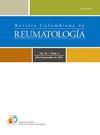Correlation of simple hematological parameters with disease activity and damage indices among Egyptian patients with systemic lupus erythematosus
Q3 Health Professions
引用次数: 0
Abstract
Objective
To evaluate the correlation of different hematological parameters in lupus patients with SLE disease activity index (SLEDAI), the Systemic Lupus International Collaboration Clinics/American College of Rheumatology Damage Index (SLICC/ACR DI), and some laboratory data related to kidney functions in active patients with nephritis.
Material and methods
80 inactive SLE patients (SLEDAI score < 10 points), and 80 active patients (SLEDAI ≥ 10 points) were enrolled in this study. All patients underwent full medical history taking, clinical evaluation including calculation of SLEDAI and SLICC/ACR DI scores, and laboratory investigations including complete blood count. The two groups were compared regarding different disease parameters. Correlations of some hematological parameters with SLEDAI, SLICC/ACR DI scores and some laboratory data related to kidney function in patients with nephritis were made.
Results
The active group showed statistically significantly higher mean NLR (P = 0.000), NC3R (P = 0.000), MLR (P = 0.000), PLR (P = 0.000), and RDW (P = 0.001), and statistically significantly lower mean MPV (P = 0.002). The mean MLR (P = 0.018) and PLR (P = 0.005) were statistically significantly higher in the active patients with nephritis. For both groups, there were no significant correlations between studied parameters and SLEDAI or SLICC/ACR DI, except with NC3R values in the active group which were associated with SLEDAI (r = .221, P = 0.049).
Conclusion
The hematological parameters in SLE have promising potential clinical application as a novel activity marker, especially in patients with nephritis.
埃及系统性红斑狼疮患者的简单血液学参数与疾病活动和损害指数的相关性
目的评价狼疮患者SLE疾病活动性指数(SLEDAI)、系统性狼疮国际合作诊所/美国风湿病学会损伤指数(SLICC/ACR DI)与狼疮活动性肾炎患者肾功能相关的一些实验室数据的相关性。材料与方法80例SLE患者(SLEDAI评分<;10分),80例活动期患者(SLEDAI≥10分)入组。所有患者均接受了完整的病史记录、临床评估(包括SLEDAI和SLICC/ACR DI评分计算)和实验室检查(包括全血细胞计数)。比较两组患者不同的疾病参数。将部分血液学参数与肾炎患者SLEDAI、SLICC/ACR DI评分及一些与肾功能相关的实验室数据进行相关性分析。结果治疗组NLR (P = 0.000)、NC3R (P = 0.000)、MLR (P = 0.000)、PLR (P = 0.000)、RDW (P = 0.001)均显著高于治疗组,MPV (P = 0.002)均显著低于治疗组。活动期肾炎患者的平均MLR (P = 0.018)和PLR (P = 0.005)均高于活动期肾炎患者。两组研究参数与SLEDAI或SLICC/ACR DI之间均无显著相关性,但活性组NC3R值与SLEDAI相关(r = 0.221, P = 0.049)。结论血液学指标作为一种新的活动性指标在SLE患者尤其是肾炎患者中具有潜在的临床应用价值。
本文章由计算机程序翻译,如有差异,请以英文原文为准。
求助全文
约1分钟内获得全文
求助全文
来源期刊

Revista Colombiana de Reumatologia
Medicine-Rheumatology
CiteScore
0.80
自引率
0.00%
发文量
92
期刊介绍:
The Colombian Journal of Rheumatology (Revista Colombiana de Reumatología) is the official organ of the Colombian Association of Rheumatology (Asociación Colombiana de Reumatología) and the Central American, Caribbean and Andean Association of Rheumatology (Asociación Centroamericana Caribe Andina de Reumatología) - ACCA. It was created in December 1993 with the purpose of disseminating scientific information derived from primary and secondary research and presenting cases coming from the practice of Rheumatology in Latin America. Since its foundation, the Journal has been characterized by its plurality with subjects of all rheumatic and osteomuscular pathologies, in the form of original articles, historical articles, economic evaluations, and articles of reflection and education in Medicine. It covers an extensive area of topics ranging from the broad spectrum of the clinical aspects of rheumatology and related areas in autoimmunity (both in pediatric and adult pathologies), to aspects of basic sciences. It is an academic tool for the different members of the academic and scientific community at their different levels of training, from undergraduate to post-doctoral degrees, managing to integrate all actors inter and trans disciplinarily. It is intended for rheumatologists, general internists, specialists in related areas, and general practitioners in the country and abroad. It has become an important space in the work of all rheumatologists from Central and South America.
 求助内容:
求助内容: 应助结果提醒方式:
应助结果提醒方式:


